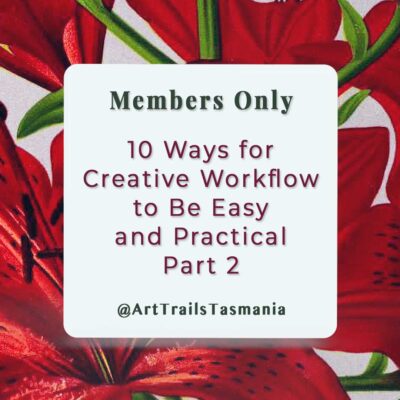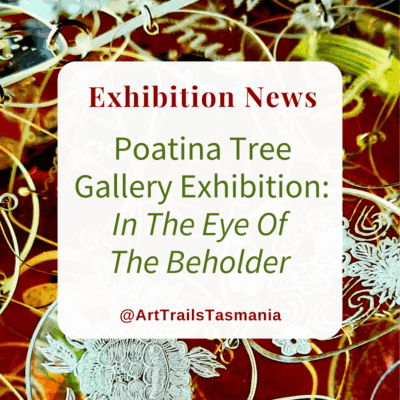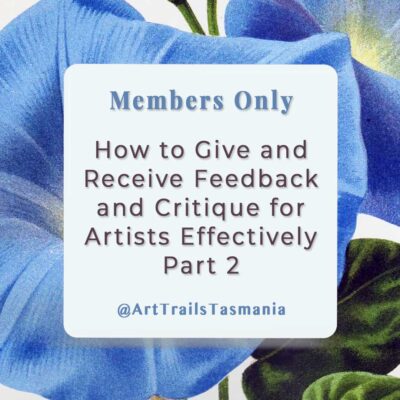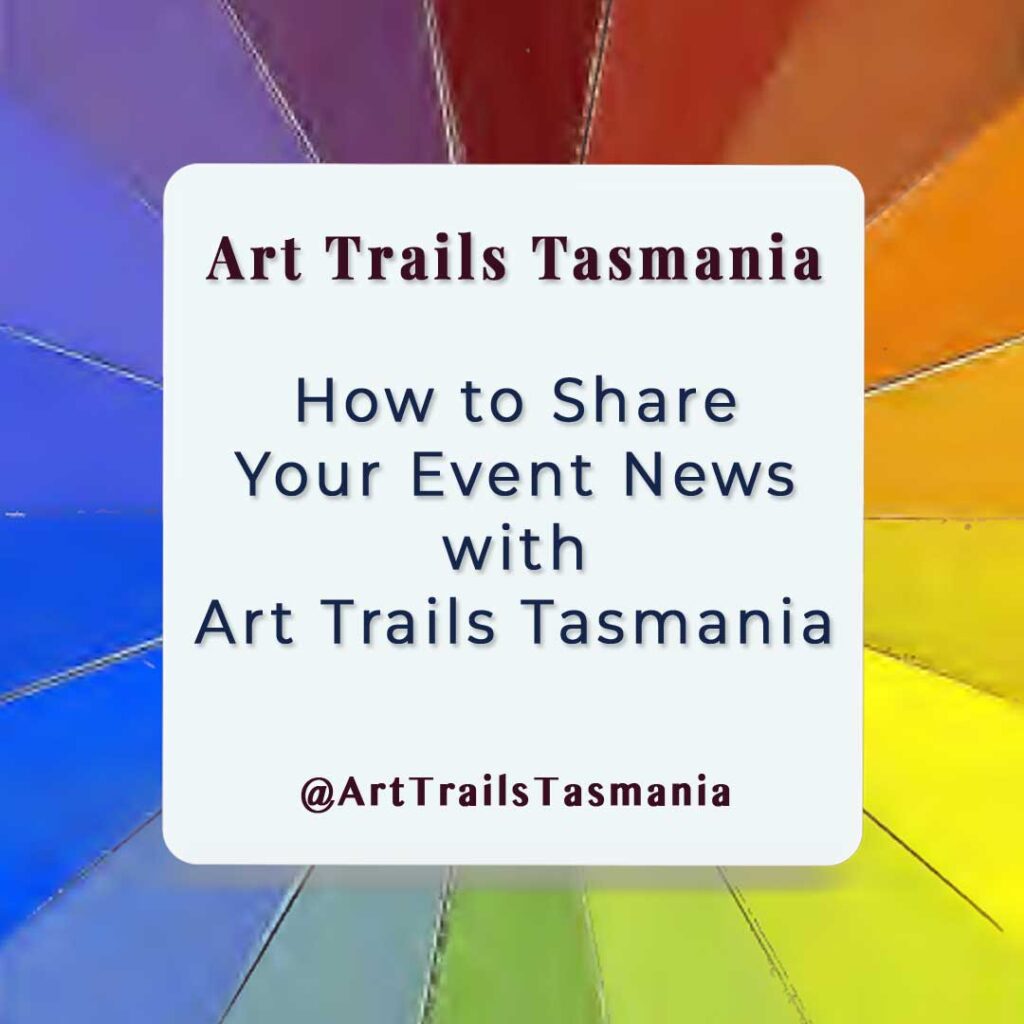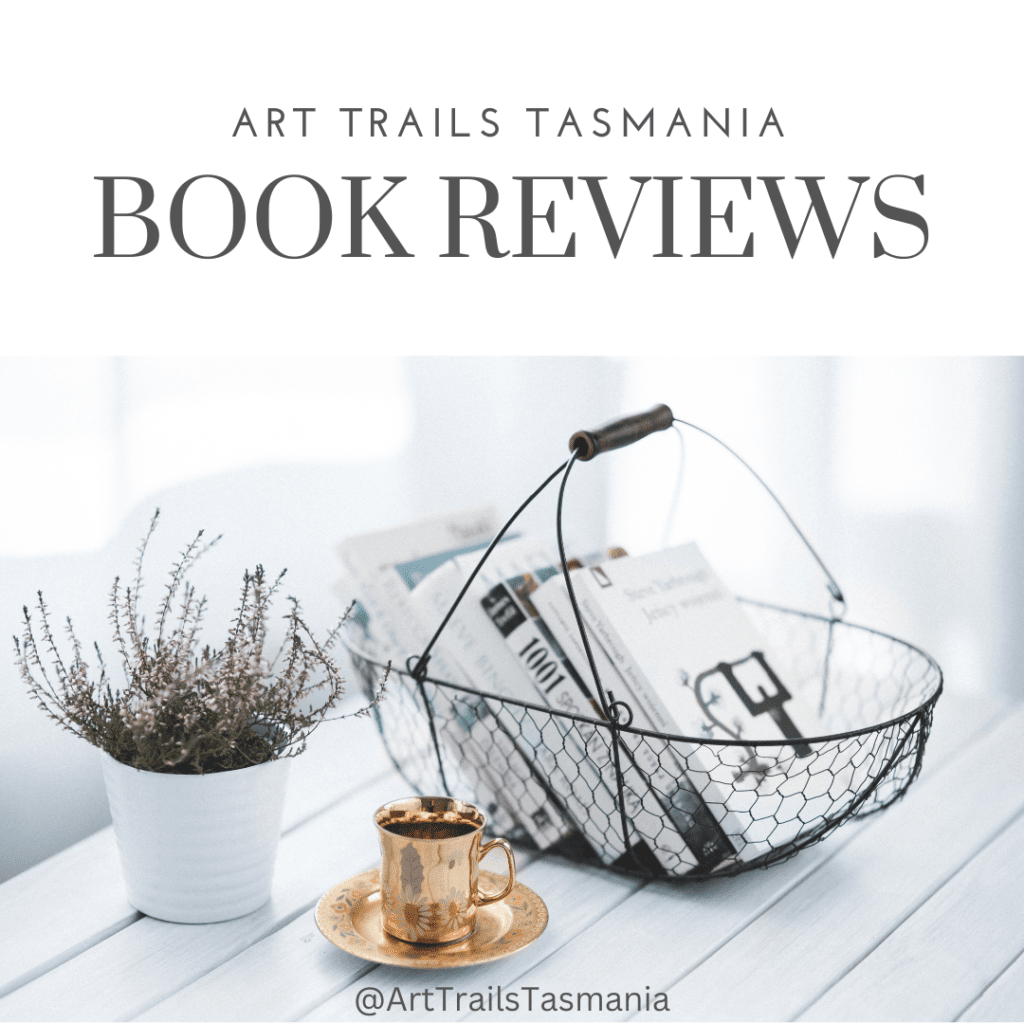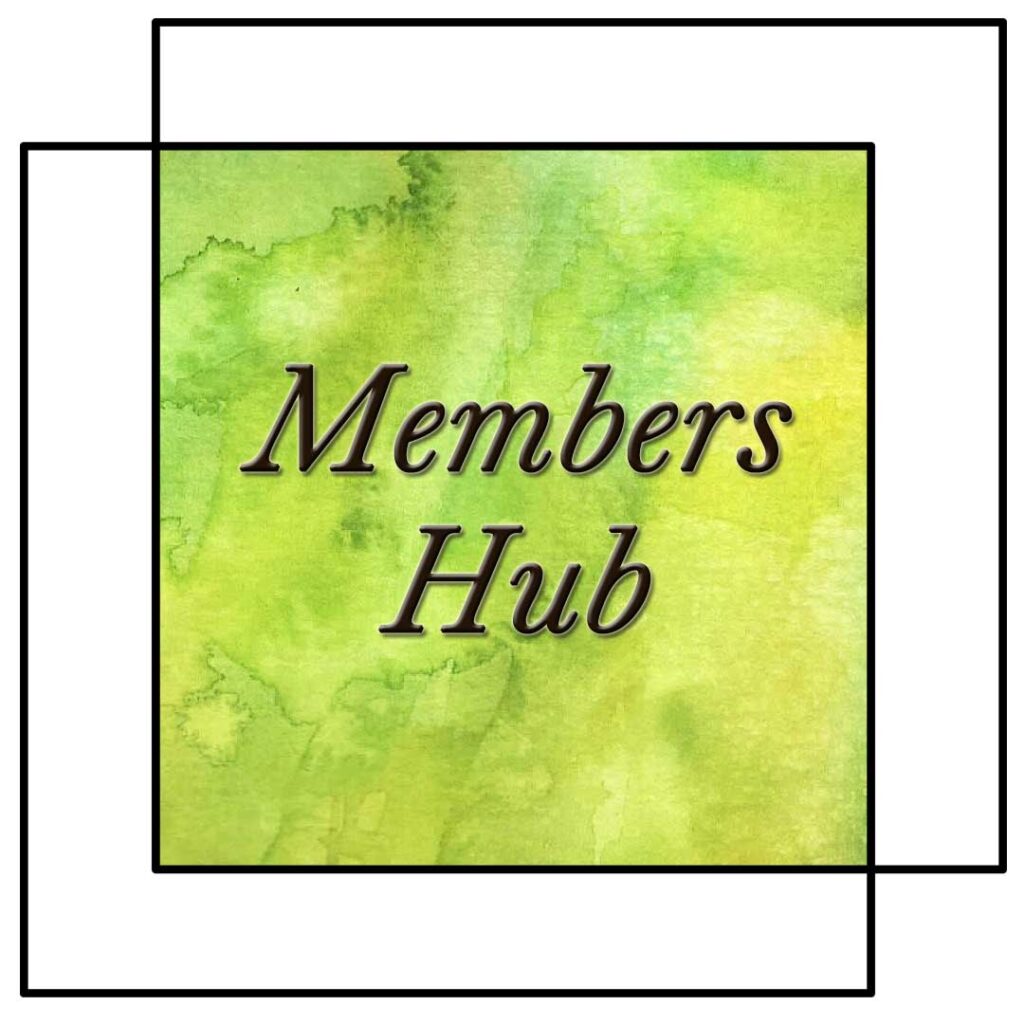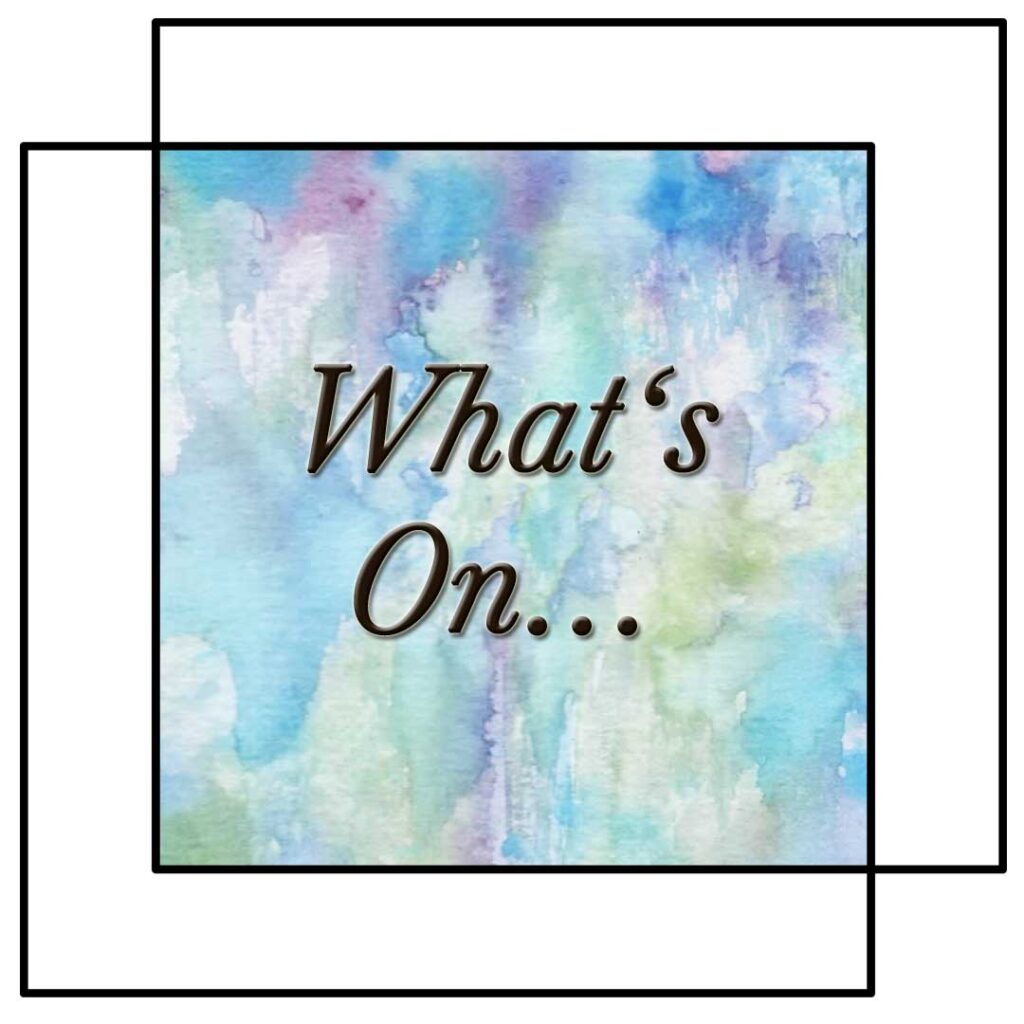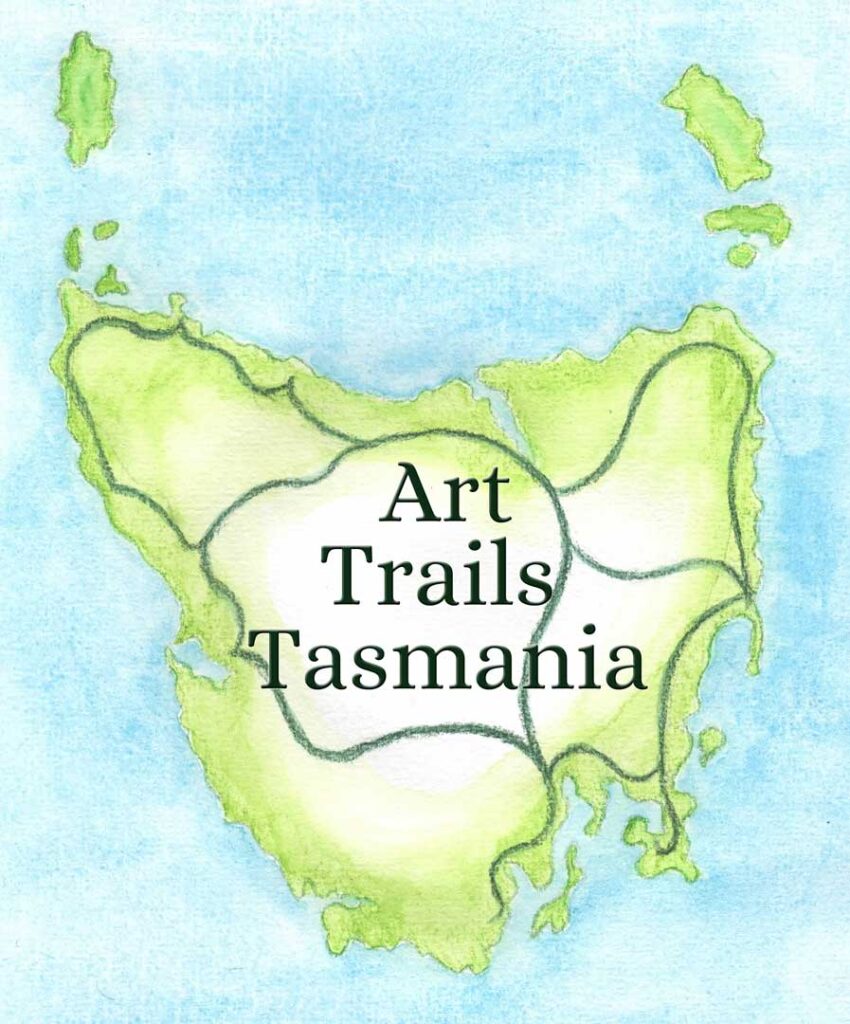12 Inspiring Ideas for Your Intentional Creative Experimentation
Welcome to part 2 of our Intentional Creative Experimentation practice series!
In the first instalment, we explored the concept of intentional creative experimentation, which is all about giving yourself the freedom to play, try new things, and embrace the process of discovery with purpose.
It’s not about creating perfect, finished pieces but about exploring and expanding your creative boundaries.
This practice encourages you to step out of your comfort zone and embrace curiosity, leading to new ideas, techniques, and skills.
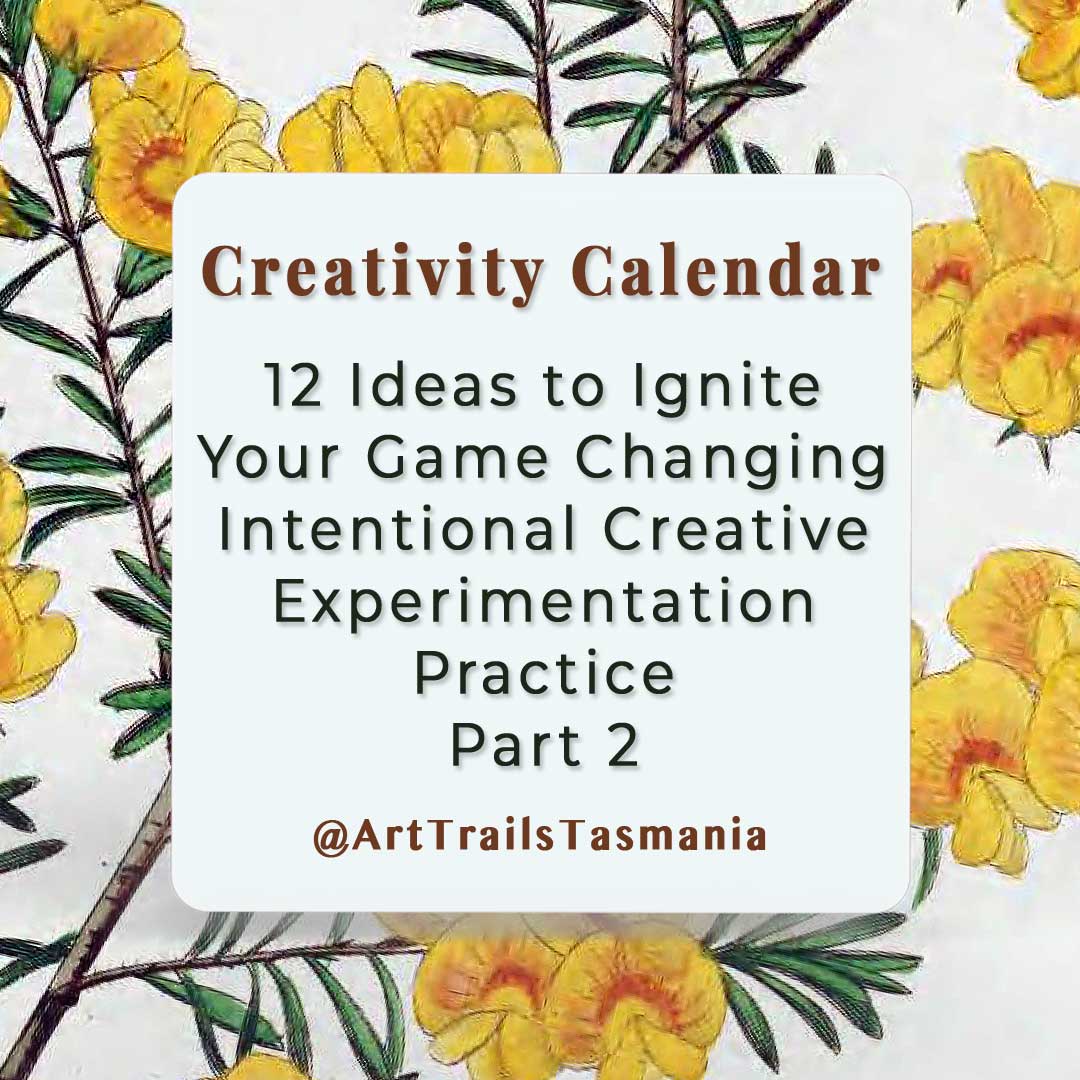
12 Intentional Creative Experimentation Ideas to Get Started With
In this blog post, we’re diving into 12 exciting ideas to explore in your own intentional creative experimentation practice.
From working with new materials to playing with texture or experimenting with scale, these ideas will help you stay inspired and spark fresh creativity.
This is being based on 12 ideas so you can explore a different one every month for a year if you like, whether it is a calendar year, from birthday to birthday or any other start date that works for you.
Plus, you can design your own weekly experiment base on the month’s theme. For example, if you’re trying a new medium, mix in different technicals or tools each week. You have the freedom to choose what you want to experiment with playfully and joyfully.
Or, you can just pick out which ones appeal to you the most and dive into them.
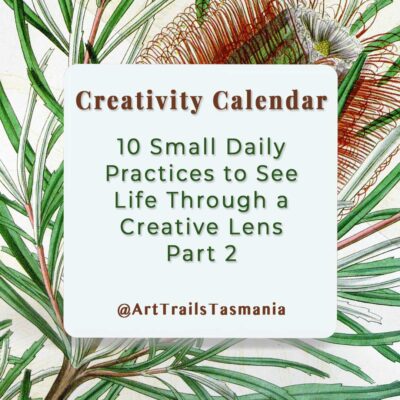
10 Small Daily Practices to See Life Through a Creative Lens Part 2
These 10 small daily practices help you build a creative life through observation, journaling, movement, & play, transforming everyday routines into artful joy.
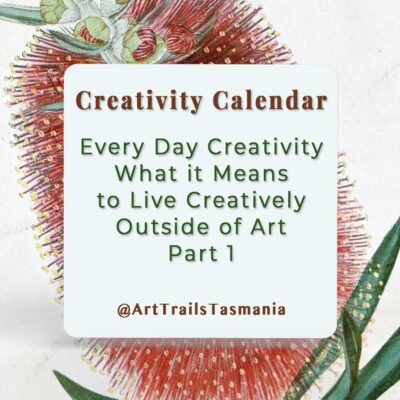
Every Day Creativity & What It Means to Live Creatively Outside of Art Part 1
Discover every day creativity beyond art and craft. Learn how living creatively transforms daily life for artists, makers, designers, and curious minds.
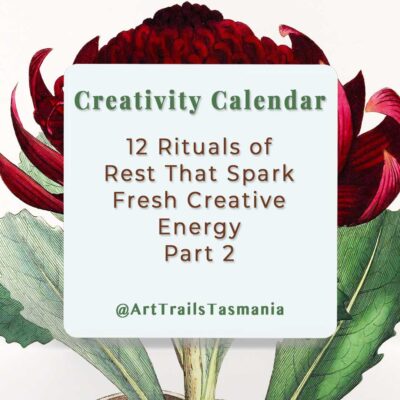
12 Rituals of Rest That Spark Fresh Creative Energy Part 2
Explore 12 rituals of rest that spark fresh creative energy. Embrace how rest fuels creativity and supports joyful, sustainable practice.
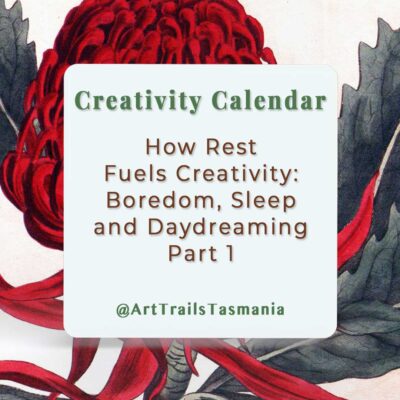
How Rest Fuels Creativity: Boredom, Sleep & Daydreaming Part 1
Discover how rest fuels creativity through boredom, sleep, and daydreaming. Explore why downtime is vital for Tasmanian artists, makers, and dreamers.
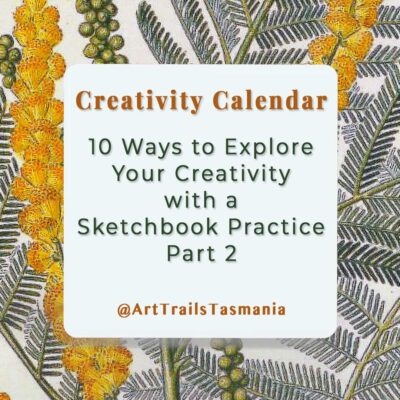
10 Ways to Explore Your Creativity with a Sketchbook Practice Part 2
In Part 2 of our series on exploring your artistry with a sketchbook practice we share 10 inspiring ideas to get stuck into on your path to daily creativity.
My Intentional Creative Experimentation Sketchbook
A great way to capture and reflect on your journey is by documenting your experiments in a sketchbook.
Not only will this help you track your progress and growth, but it will also become a treasure trove of ideas, discoveries, and new techniques to revisit whenever you need a creative boost.
There are all manner of sketchbooks and some are particularly adaptable to mixed media with their spiral binding, while others are more suited for dealing with a lot of water.
You may find that the best sketchbook for your purposes is one that you are happy to get started in.
So often we hold back from using the “precious” sketchbooks because of the inner “perfectionism” gremlins.
Stay focused on what you want to achieve with this intentional creative experimentation practice and pick the sketchbook that gives you joy to get started.
So, grab your sketchbook and let’s dive into these 12 ideas to fuel your creative exploration and growth over time. Happy experimenting!
12 Ideas for Your Intentional Creative Experimentation Practice
Here are 12 ideas to inspire your intentional creative experimentation practice.
Each one is designed to spark curiosity, build skills, and most importantly—let you enjoy the process of playful exploration!
1. Try a New Medium
Swap your usual tools or materials for something different. If you’re a painter, experiment with ink or pastels. If you’re a textile artist, try paper collage.
Experimenting with a new medium is a great way to refresh your creative practice. If you’re used to painting with acrylics, try switching to watercolours, pastels, or even ink for a different experience.
The change in tools and textures forces you to think and work differently, sparking fresh ideas and unexpected results.
For textile artists, consider paper collage, working with mixed media, or even incorporating paints or inks into fabrics.
Exploring new mediums not only pushes you out of your comfort zone but also helps you discover techniques and processes that you may fall in love with.
There’s no pressure to master the medium right away—it’s all about the playful exploration and seeing where it takes you.
Even if it feels awkward at first, you’ll gain a new perspective on your usual practice and learn valuable skills that could inspire your next project.
2. Mix Unlikely Colours
Use colours you wouldn’t normally pair together. Challenge yourself to create a small piece with an unexpected palette.
Colour is one of the simplest yet most powerful ways to experiment creatively. Instead of reaching for your usual palette, challenge yourself to mix unlikely colour combinations—ones you’d normally shy away from.
Try pairing bright oranges with soft pinks, or earthy greens with vivid purples. Even colours that seem “clashing” can work beautifully when you explore their balance.
To start, create small swatches, patterns, or abstract pieces to see how these colours interact. This kind of playful experimentation can help you break out of colour habits, discover surprising harmonies, and add fresh energy to your work.
You might even stumble across a new “signature palette” or an idea for a bigger project. The joy is in letting go of what feels “safe” and allowing yourself to embrace bold choices.
Mixing unexpected colours is a brilliant reminder that creativity thrives when we take risks.
3.Work with Limited Supplies
Pick just three tools, materials, or colours and see what you can create. Constraints often lead to surprising results.
Sometimes, less really is more! Limiting yourself to just three tools, materials, or colours can stretch your imagination and inspire creative breakthroughs.
For example, if you’re a painter, challenge yourself to use only two brushes and three colours to create a piece.
If you’re into collage or mixed media, choose a limited selection of papers or textures. By reducing your options, you’re forced to think resourcefully, making each decision more deliberate and thoughtful.
This can lead to surprisingly original results. Working with constraints also removes the overwhelm of endless choices, allowing you to focus on experimenting with what’s in front of you.
It’s an excellent exercise for shaking up your creative habits and rediscovering the magic of simplicity.
You’ll often find that these limitations help you develop new skills and ideas you might not have explored otherwise. Plus, it’s a brilliant way to use up those supplies gathering dust!
4. Create with Your Non-Dominant Hand
It’s messy, it’s fun, and it frees you from the pressure of perfection.
Creating with your non-dominant hand is a playful way to break free from perfectionism and discover a looser, more intuitive style.
It’s meant to be messy, so let go of the need for control and enjoy the process. Whether you’re drawing, painting, or stitching, this experiment encourages you to focus on the act of creating rather than the outcome.
You’ll often find surprising results—lines are wobblier, shapes are more organic, and the results have a charming, raw quality.
This approach is perfect for reconnecting with the joy of making, helping you embrace imperfection and see your craft in a fresh, lighthearted way.
5. Incorporate Found Objects
Use recycled materials or objects from nature like leaves, fabric scraps, or old magazines in your work.
Using found objects in your art and craft projects is a wonderful way to add texture, meaning, and sustainability to your work.
Gather items like fallen leaves, twigs, fabric scraps, old magazines, or bits of packaging and see how they inspire you.
These materials can be collaged, painted, stitched, or transformed into something new entirely. By working with what’s around you, you’ll start to see creative potential in everyday items.
Found objects bring unique character to your projects and often tell a story. It’s a brilliant way to experiment without needing new supplies—just curiosity and a willingness to play!
6. Play with Scale
Take something you normally make small and make it BIG, or vice versa.
Switching up the scale of your work can completely transform your creative process. If you usually work small—like detailed sketches, embroidery, or jewellery—challenge yourself to go BIG.
Use larger canvases or sketchpads, oversized tools, or bold strokes to create something impactful.
Conversely, if you tend to work large, shrink things down and focus on intricate, small-scale pieces.
Playing with scale helps you see your craft from a new perspective and encourages you to adapt your techniques.
It’s fun, refreshing, and often leads to creative breakthroughs. Changing the size of your work helps shake up routines and opens up exciting new possibilities.
7. Recreate “Mistakes” on Purpose
Did a previous project surprise you? Try to recreate that effect intentionally.
We’ve all had those happy accidents—a splash of paint, a smudge, or an unintended stitch—that turned out to be surprisingly beautiful.
Instead of dismissing it as a fluke, try recreating the effect intentionally.
Was it a texture, a colour mix, or a layering accident that caught your eye? Take time to explore it further, tweaking and experimenting until you understand how it happened.
Recreating mistakes teaches you to see unexpected results as opportunities and gives you the confidence to incorporate them into future projects. Sometimes, the best creative breakthroughs come when you embrace imperfections and turn them into something magical.
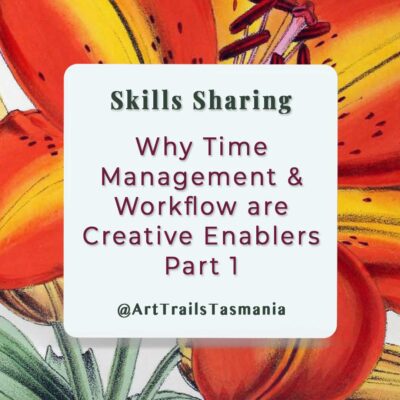
Why Time Management & Workflow are Creative Enablers Part 1
Time management empowers artists. Learn why workflow reduces overwhelm, builds clarity, protects creative energy & supports sustainable creative business success.
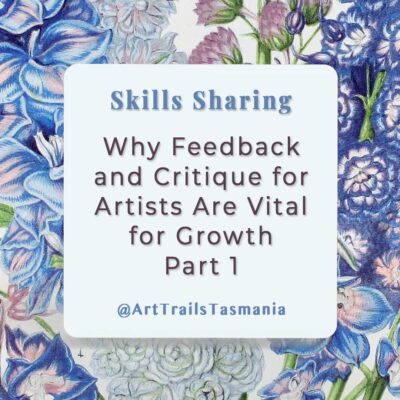
Why Feedback and Critique for Artists Are Vital for Growth – Part 1
Discover why art feedback and critique for artists accelerates growth, sharpens skills, and builds confidence in your creative practice.
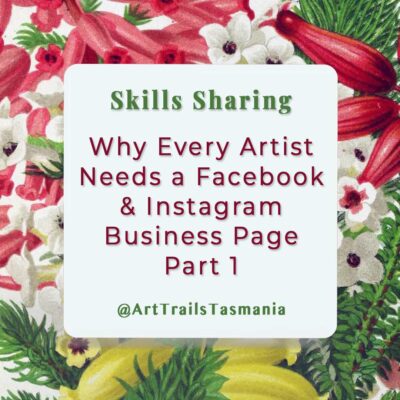
Why Every Artist Needs a Facebook and Instagram Business Page – Part 1
Discover why every artist should have a Facebook and Instagram business page. Learn how Meta values business accounts, the benefits & how it works for you.
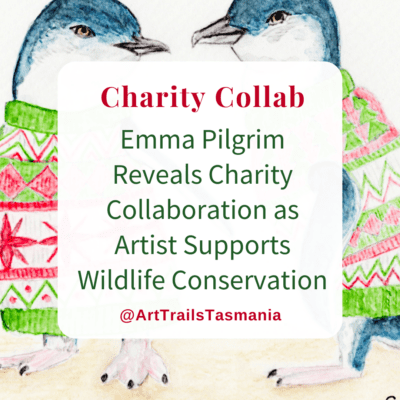
Emma Pilgrim Reveals Charity Collaboration as Artist Supports Wildlife Conservation
Charity collaboration has shaped Tasmanian artist Emma Pilgrim’s return to painting, driven by wildlife care, creativity & a deep commitment to meaningful impact.
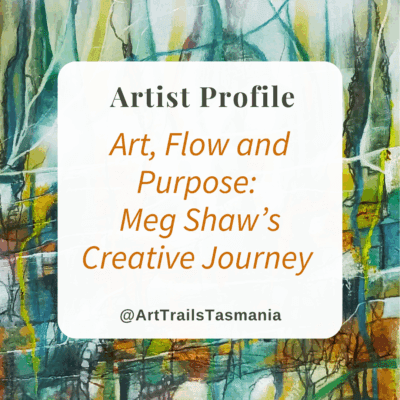
Art, Flow & Purpose: Meg Shaw’s Creative Journey
Meg Shaw shares how art brings her joy, purpose and freedom. Inspired by Tasmania’s beauty, she finds creative flow and self-expression through painting.
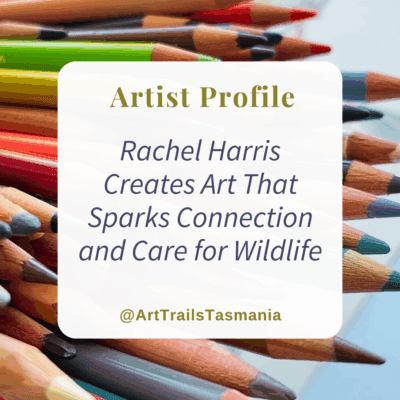
Rachel Harris Creates Art That Sparks Connection and Care for Wildlife
Be inspired by the detailed wildlife art by Rachel Harris as she shares her inspiration, passion for wildlife and creativity in her Artist Profile story.
8. Experiment with Texture
Layer, scrape, emboss, or stitch—find ways to add dimension to your work.
Adding texture is a brilliant way to bring dimension and interest to your work, whether you’re a painter, textile artist, or ceramist.
Play with layering techniques—try scraping paint, embossing paper, stitching fabric, or combining different materials for tactile effects.
Use unconventional tools like sponges, palette knives, or even cardboard to create marks and patterns.
Think about how textures can tell a story or evoke a feeling. Experimenting with texture encourages you to step beyond flat surfaces and explore how materials interact.
There’s so much joy in discovering what happens when you push, pull, or layer creatively—let your hands lead the way!
9. Set a Timer
Give yourself 10 minutes to create something. Quick experiments loosen you up and build creative energy.
Setting a timer for 10 minutes is a fantastic way to shake off creative pressure and get those ideas flowing.
When the clock starts, focus on creating something quickly—no overthinking, no worrying about the outcome.
It could be a small sketch, a collage, a thrown pot, or a few strokes of paint. Working against the clock forces you to trust your instincts, loosen up, and enjoy the process.
You might be surprised at how much you can accomplish in such a short time! Quick experiments like these build creative energy, helping you move past blocks and rediscover the playful joy of making.
10. Work Backwards
Start with the final step in your process and work in reverse to see what happens.
Working backwards can shake up your creative routine and open the door to exciting discoveries.
Start with the final step of your process—maybe a finished detail, varnish, or final stitch—and work in reverse.
How would you get to that point? For example, if you’re a painter, begin with highlights or fine lines before layering the background. If you’re a textile artist, try adding embellishments first and build around them.
This playful reversal encourages fresh thinking and can uncover new techniques or ideas. Working backwards removes predictability, letting you approach your craft with curiosity and see the creative process in a new light.
11. Layer Unrelated Techniques
Combine two techniques that don’t normally “go together”—like painting over embroidery or stitching on paper.
Combining unrelated techniques is a brilliant way to experiment and create something unique. Why not try painting over embroidery, stitching on paper, or layering collage with ink washes?
These unexpected combinations can spark new ideas and push your creative boundaries. By mixing techniques that don’t “belong” together, you allow yourself to play without rules or expectations.
The results might be quirky, surprising, or even beautiful—but they will always teach you something.
This approach also encourages resourcefulness, helping you see your tools and materials in new ways. Layering different processes can bring rich textures, depth, and a sense of magic to your work.
12. Reimagine Old Work
Take a piece you’re not happy with and give it new life. Paint over it, cut it up, or transform it into something else entirely.
We all have unfinished or unloved pieces hiding away, but they don’t have to stay forgotten. Take an old piece and reimagine it—paint over it, cut it into smaller sections, collage onto it, or add new elements like stitching or texture.
Sometimes, transforming what didn’t work initially can spark fresh inspiration and lead to something entirely new.
Reworking old projects also removes the fear of “ruining” something because you’re giving it a second chance. It’s liberating, playful, and a great way to learn from what you’ve already created. You might find that reimagining these pieces unlocks unexpected ideas or techniques.
Remember, these experiments don’t have to result in finished pieces. The joy comes from the process and the discoveries you make along the way.
Explore Your Creativity
Have these ideas sparked some of your own? Maybe with your existing art and craft supplies?
Maybe in collaborating with a creative friend on a theme? Be sure to capture these unique ideas in your creativity journal so you can explore them.
Enjoy the creative exploration!
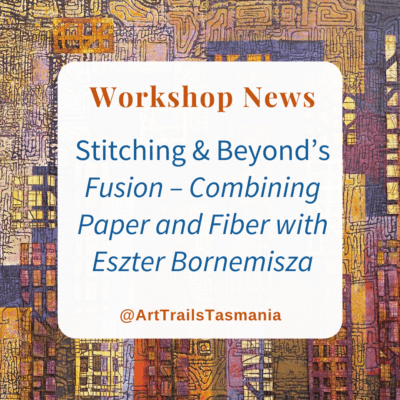
Fusion – Combining Paper with Fibre with Eszter Bornemisza Workshop
Explore layered histories in this textile art workshop, using paper, fabric, and stitch to create translucent collages inspired by your environment.
Read the Latest Blog Stories and Flourish…
10 Small Daily Practices to See Life Through a Creative Lens Part 2
10 Creative Daily Practices to Make Your Own The creative spirit and creativity are not reserved for special moments or formal art-making; it can be nurtured every day through intentional, small practices. For makers, artists, and craft lovers, cultivating every day...
Emma Pilgrim Reveals Charity Collaboration as Artist Supports Wildlife Conservation
Art & Conservation Chairty Collaboration Charity collaboration sets the tone for Emma Pilgrim’s story, which was partly inspired by our Explore Charity Collaborations for Community, Growth and Connection – Part 1andPart 2 features. After returning to watercolour...
Fusion – Combining Paper with Fibre with Eszter Bornemisza Workshop
Textile Art Workshop to Inspire & Delight 2026 is kicking off our workshop year hosting the internationally famous Eszter Bornemisza with her fabulous experience in combining textiles and paper in interesting ways in art works. Her workshop coincides at Moonah...
10 Ways for Creative Workflow and Time Management to be Easy and Practical Part 2
Creating Making Time with Time Management Time management becomes genuinely useful only when creative people shape practical workflow systems that match their personalities, schedules, responsibilities and income streams. In this second part of the series, we focus...
Why Time Management & Workflow are Creative Enablers Part 1
Creating More Time for Making with Time Management & Worksflows Time management may feel counterintuitive to creative people, yet effective organisation genuinely frees artists to produce richer ideas, finish projects and build sustainable creative businesses. ...
Every Day Creativity & What It Means to Live Creatively Outside of Art Part 1
Allowing Every Day Creativity Creativity is not confined to the studio or the sketchbook; it can be woven into every part of life, both ordinary and extraordinary. For makers, artists, and curious spirits, embracing every day creativity offers a chance to infuse...
Poatina Tree Gallery “In the Eye of the Beholder” Exhibition
Explore the Poatina Tree Gallery Abstract Art Exhibition Art is explored through playful abstraction in this engaging exhibition, featuring everything from expressive paintings to thoughtful ceramics and sculptural forms crafted from reclaimed objects. It’s a space...
Art, Flow & Purpose: Meg Shaw’s Creative Journey
Joy and Purpose Through Art for Meg Shaw Art brings me joy. I particularly love being in the 'flow' state of creation – when I'm absorbed in the moment - so much so, I have no sense of time. Another aspect that's engaging for me is being able to express myself in an...
How to Give and Receive Feedback and Critique for Artists Effectively – Part 2
Turning Insight into Action Art feedback and critique for artists isn’t just about understanding why feedback matters — it’s about learning how to make it work for you. In Part 1 of this series, we explored the emotional and creative value of critique: how it builds...
Read What Our Members Say About Belonging
Join the growing, supportive artists community today and have your Artist story told here.
Belinda is doing a great job creating a professional looking artist hub online. Check out the profile I posted recently to see how well she does them. To all my artist friends let’s help make this THE go to place to discover local artists.
You won’t regret joining Art Trails Tasmania . It’s a welcoming community for creatives at any career stage.Becoming an Art Trails Tasmania member wasn’t a hard decision for me to make as it’s such a wealth of knowledge and support.Being member provides a quality way to showcase your creative endeavours and it’s quickly growing in reach.
We operate a home based picture framing business and recently joined Art Trails Tasmania as a means to giving us exposure to the wider artist community. We have almost immediately seen increase in activity thru our online sites, which I am certain will lead to more opportunities to grow our business.

